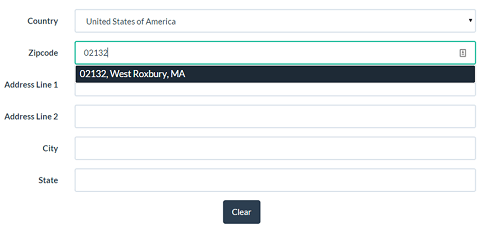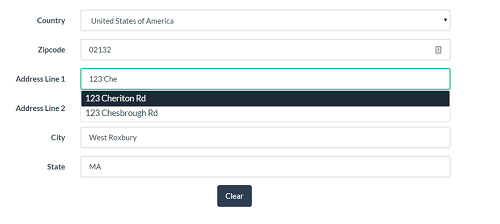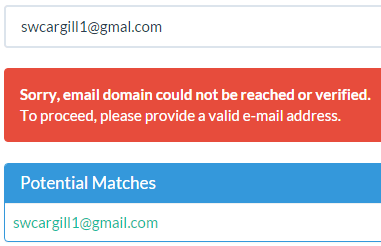What is the mobile phenomenon in retail?
What we’ve found over the course of the last three to four years is that more purchases have come over mobile than ever before. At least 45 percent of the time, shoppers are using their mobile devices to make educated decisions, do research, and purchase items quickly and easily. And they want to do it on their terms.
The vast majority of people are shopping on mobile devices now, and between iPads, iPhones, and Androids, people are so accustomed to using their phone that it’s not just a piece of equipment, it’s an extension of themselves. You have, for the first time ever, a generation where the use of technology as an integral part of everyday life is the norm. In fact, 80 percent of all babies today will be born to millennial mothers.
What it is—Part 1
So, we’re no longer talking online shoppers who are used to going in-store—we’re talking about people who are going to be okay with making purchasing decisions on their mobile devices. We’re talking about having the most informed shoppers in the history of retail. Eighty percent of all in-store purchases are a direct result of research done on a mobile device. We’re also talking about the fact that people are more responsive to emails now. When there’s a good sale, people will check their smartphones, click through the email to go to that sale, and make that purchase immediately—and they might not necessarily want to download an app to do it.
What it is—Part 2
What the mobile phenomenon also deals with is the reality that it’s not the mobile apps that matter; it’s the mobile web browsers. All these stores want consumers to sign up for mobile apps because they think it drives loyalty. So you have all these resources pooled into making a great mobile app, while neglecting the optimization of the actual shopping experience on a browser.
Let’s say you focus on making a mobile app, on making navigation easier on the browser, on making the page-load time faster, which is all important. But you fall off the wagon when you get to the checkout process because you’re still making shoppers click into multiple form fields to fill in their billing and shipping information and then you get the dreaded shopping cart abandonment.
Where Experian Data Quality fits in
Everyone knows how annoying it is to purchase something on the phone. Having to scroll down to your state, click on multiple field forms, etc., takes time that shoppers today don’t really like to give.
Our address verification for mobile shoppers
Everyone knows that purchasing online is the big thing. Shoppers are buying on mobile devices more than they ever have before. Retailers are trying to make the mobile experience better by investing in better mobile browser navigation and optimized functionality, but where a good shopping experience can turn into a bad one is at checkout (i.e. the majority of the shopping experience goes into inputting information).
The act of purchasing is what takes up the most time. If retailers can limit the amount of time it takes for shoppers to input data, it’ll increase their conversion rates. People right now don’t want to go through the effort of checking out through mobile devices because it takes too long. As a result of this, they either buy in-store or purchase on a desktop—enter mobile shopping cart abandonment. Therefore, even if the shopper bought something, the retailer hasn’t tracked it as one. All they see are the items abandoned in the mobile cart. Retailers talk about the mobile shopping experience, but they haven’t addressed it.
Our mobile address verification streamlines the contact data acquisition process at mobile checkout, thereby decreasing shopping cart abandonment rates. Unlike other address validation solutions, our functionality works magic by having shoppers input their ZIP code first, and our pre-populating software then provides the city, state, and country based off that ZIP code. And right there, we’re omitting three form fields and eliminating the need to click and scroll in those three fields. Using our mobile address verification functionality, we capture someone’s full and standardized and validated address in 9-12 keystrokes. (And to give you a frame of reference, a typical checkout usually takes 25+ keystrokes.) Below are some examples of our address verification at work.


Retailers should focus on making the mobile shopping journey as easy, as non-disruptive as possible.
Our email verification for mobile shoppers
How annoying is it when you enter your email address on a mobile device and you fat-fingered Gmail? (Examples include Gmall, gmil, etc.) And because you fat-fingered your email address, you don’t receive that email or receipt? So now you have to fill it in again. (That’s what copy and paste is for, right?)
Our mobile email validation notifies the mobile user when there’s an inaccuracy in his or her email and offers suggested changes before they leave the page or even the form field. Absolutely no disruption to workflow. In fact, it enhances the workflow—no need to press backspace; they just click on the suggested change. Voila—you now have a validated email and a happy customer. Below is an example of our email verification solution.

Where the future of mobile retail is going
- According to PwC, mobile devices delivered 37 percent of Ecommerce sales on Thanksgiving Day weekend in 2015, compared from 25 percent the year before
- Fifty-eight percent of online shoppers say convenience is the chief factor behind online shopping—only 32 percent said price
- According to RetailDive, younger consumers make more purchases on mobile than other demographics, with 40 percent buying at least monthly
- When shopping brick-and-mortar locations, eighty percent of millennials used a mobile device to research product information, look for deals, and make payments—only 55 percent of consumers over 35 reported doing the same
We have to be ready because this is the industrial revolution of the millennial generation. And Gen Y and Gen Z are along for the ride as well. As a retailer, you need to understand that omnichannel fits in the palm of your hand. Never before have we been in a situation where it has been so easy to make mistakes—the percentage of incorrect and duplicate information is going through the roof. Yes, we need to make the shopping experience easier for the shopper, but we need to do it while making sure that the contact data being captured is fit for purpose.
We’re not gonna change the way you do business; instead, our solutions will complement the shopping experience your brand is known for.
If you want to hear an in-depth analysis about the mobile phenomenon in retail, stay tuned for our Bite-Sized Lunch sessions coming this summer! In the meantime, check out our previous webinars about the retail experience here.
If you want to talk in greater detail about best practices and improving the shopping experience on a mobile device, connect with me on LinkedIn. For more general data quality questions, you can also go to our Contact Us page.
Contact us











